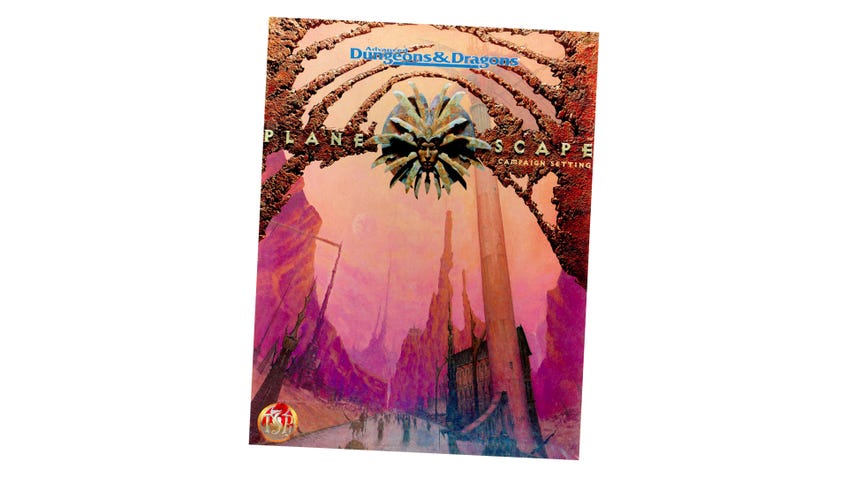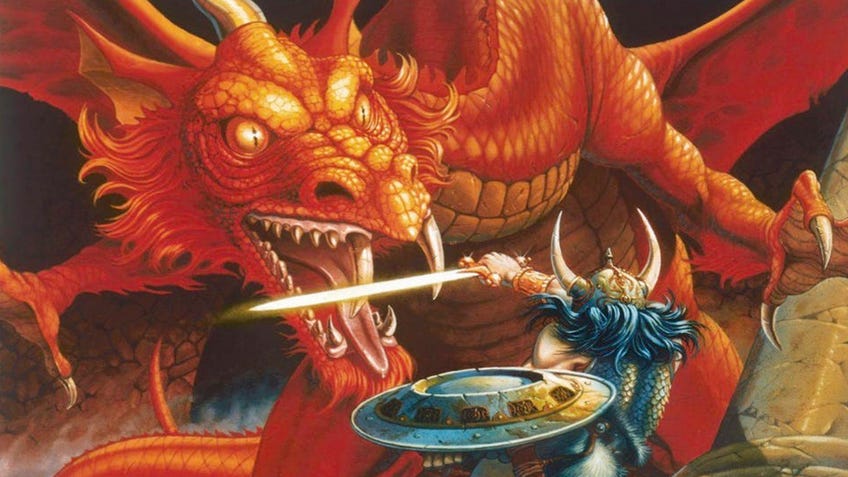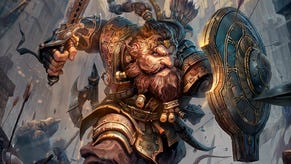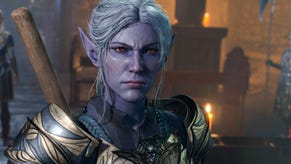10 things you didn't know about the early history of D&D
From the RPG’s turbulent beginnings and the Satanic Panic to the fall of original publisher TSR.
Dungeons & Dragons is fast approaching its 50th anniversary. While the roleplaying game has never been more popular, there are a lot of people who might not know about the early days.
From 1974 through 1997, the company that created and owned the company, TSR Inc., was based in Lake Geneva, Wisconsin. That’s the extent of what most people know, with the rest of the story being a hazy collection of tall tales, forum posts and things overheard at conventions.
Luckily, there’s a new book coming out that separates fact from internet rumor and long-held forum gossip. Slaying the Dragon: A Secret History of Dungeons & Dragons covers the rise of TSR, the fall of co-creator Gary Gygax, the rescue of D&D by Wizards of the Coast and more. Not only did author Ben Riggs go to the source and interview dozens of ex-employees, he was sent bundles of documents from the old days at TSR by sources requesting to remain anonymous.
From Dungeons & Dragons’ earliest origins and its central role in the infamous Satanic Panic to the fall from grace of TSR that led to its sale to Wizards of the Coast and the game we know today, here are 10 things we learnt from Slaying the Dragon that you (probably) didn't know about the history of D&D.
1. Many legendary D&D creators started out as fans of the game
Dungeons & Dragons began its life as a game in the basement of the Gygax home. As it grew in popularity and expanded in scope, Gygax needed to add staff members. But there was a problem: the only people who could grow with the game had to know what it was.
Most writers and game designers at the time were still unaware of what a roleplaying game was. So Gygax recruited from people who wrote fan letters and sought him out. Tim Kask tracked down Gygax about a rules question and ended up with a job as the company’s first full-time editor. Brom, the visionary artist whose Dark Sun covers brought that brutal setting to life, followed up sending in paintings for an art job by showing up at the offices.
2. Advanced Dungeons & Dragons was partially a political ploy
New editions of a game usually come out for mundane reasons. The company is out of the old books and needs to do a reprint. The designers want to collect rules from different books and tweak ones that weren’t working.
Advanced Dungeons & Dragons came about for these reasons but it also had a subtle purpose. AD&D was credited solely to Gary Gygax, which means he got all the royalties for each product sold - unlike original Dungeons & Dragons, which split those royalties between Gygax and co-creator Dave Arneson.

3. TSR went through generational talents like popcorn
Jeff Easley. Margaret Weis. Brom. R.A. Salvatore. These and many more names brought the worlds of Dungeons & Dragons to life. Without Dragonlance or Dark Sun, the company’s sales would have flattened out, if not started to shrink much earlier. Yet TSR treated them as disposable tools because management thought another one would be along shortly. What’s almost as shocking? For most of the company’s history, they were right.
“As a fan of second-edition AD&D growing up, this is what perhaps astonished me more than anything else in my research,” says Riggs. “Management seemed to believe in the brand above all, a brand almighty. Even though Margaret Weis and Tracy Hickman helped create a setting, Dragonlance - which is so popular Wizards of the Coast is updating it for Fifth Edition this summer - the pair were paid like entry-level employees. R.A. Salvatore was causing problems? Management believed he could be replaced. You will notice TSR didn’t even put the names of authors on the spine of their novels!
“The truth, of course, was that the brand of D&D and Forgotten Realms and so on was the creation of people who didn’t own what they created. Like the geniuses who created Marvel and DC, the brilliant minds who created the fantastic worlds of D&D were frequently disrespected and sacrificed in the name of thrift.”
4. TSR went up against Batman maker DC Comics - and lost
In the late 1980s, TSR licensed several of its properties to DC Comics. The alliance produced runs of Advanced Dungeons & Dragons, Dragonlance, Forgotten Realms and Spelljammer comic books. But then, in a betrayal right out of a fantasy novel, TSR decided to produce so-called “comics modules” that contained a comic in the front and a game in the back through its TSR West branch. Ever heard of Assassin 13, Buck Rogers, Intruder, The Last Warhawk and RIP? Probably not, because they were terrible. TSR West’s ploy cost the company a profitable licence renewal.
“TSR seemed to always assume that competition was the right model for its business,” says Riggs. “It attacked anyone it suspected as much as looking at its IP with impure thoughts. The attempt to start producing comic books ended up costing the company its access to the comic book market entirely.
“It is ironic in the highest meaning of the word. The company took actions to expand its exposure into the comic book market, and those actions did the exact opposite. Namely, they left TSR with no product on comic book racks.”

5. Lorraine Williams is a villain to some and a hero to others
Gary Gygax was only with TSR until 1986. He was bought out by Lorraine Williams and left the company. Williams has become the heavy in many tellings of TSR’s fall. She became CEO and president in 1985 and many bad decisions, like poor treatment of employees and attempts to expand the company beyond D&D, were placed at her feet. But there are those among the people Riggs interviewed who have a good opinion of her. Her actions in the ‘80s undoubtedly saved the company. Just like her choices in the ‘90s doomed TSR to crash.
“The accounts on the legacy of Lorraine Williams have to be balanced,” says Riggs. “Yes, she made a lot of mistakes. Yes, we must lay the failure of the company in 1997 at her feet. But in addition to saving the company in the mid-1980s, she oversaw D&D’s Silver Age. For example, she greenlit the publication of the Forgotten Realms, which is the default setting of D&D to this day.”
6. Williams kept trying to make Buck Rogers happen
One of the most baffling choices made in the Williams era of TSR was to release several different games based on Buck Rogers, a pulp space hero from the 1930s who saw a brief resurgence of popularity thanks to a 1979 TV series that came out in response to Star Wars.
The first Buck Rogers RPG came out in 1988 and was something of a gritty reboot of the setting that still kept the rocket pistols and bubble helmets. A second game in 1993 cut closer to the original material. Neither sold well, so why did Williams keep trying to get it off the ground? It turns out she was trying to keep it in the family, as she was part of the Dille Family Trust that owned the IP and stood to profit if TSR revived the space hero once again.

7. The most beloved D&D settings were the worst-selling ones
Whenever Wizards of the Coast gets ready to announce a new book for Dungeons & Dragons 5E there’s always a significant amount of hope that it will announce the return of an older D&D setting. Many fans got what they wanted this year, with Spelljammer and Dragonlance on the way. Others are still holding out hope to see some Dark Sun and Planescape soon.
The one thing all these settings have in common? They each sold worse than the next, despite developing cult followings after the fact. What didn’t help were the rising cost of the production values the company put into the lavish boxed sets.
8. TSR liked the Satanic Panic… at first
If you’ve been watching the latest season of Stranger Things, you’ve probably seen reference to the “Satanic Panic” of the ‘80s that affected the popularity of Dungeons & Dragons. The short version is that concerned parents were afraid that playing the RPG was getting their kids into the occult and witchcraft. (Here's the full story.)
It caused a lot of problems for players of the game back then, but TSR thought the notoriety and bad reputation perked up sales of D&D during a time when they were slumping. The company was selling more books, but the game stores and other retail partners on the front lines felt the heat through lower sales on their end. Those bad feelings got back to the company and caused it to reevaluate its content.
9. A cheesy VCR game was the death knell of TSR
Remember the warehouse at the end of Raiders of the Lost Ark? Instead of mysterious treasures from history, imagine one filled with unsold VCR board games that nobody wanted to buy.
Such was the fate of Dragonstrike, an introductory boxed set for D&D which came with an instructional video that looked like it was made for ten bucks in 1993. The game was supposed to hook a new generation on fantasy adventure. Instead, it sat in the warehouse taking up space and eating up production costs - neither of which TSR could afford at the time.
10. Wizards of the Coast tried to buy TSR earlier and failed
The writing was on the wall for TSR and Dungeons & Dragons for a few years in the mid ‘90s. A shifting market, several poor business decisions and declining sales were finally taking their toll on the company. Wizards of the Coast, flush with cash after the breakout success of Magic: The Gathering, saw an opportunity to cement its place in the tabletop gaming market by acquiring D&D.
But for reasons only known to Lorraine Williams, she just didn’t like Peter Adkison, CEO of Wizards of the Coast at the time. She was willing to sell to Five Rings Publishing owner Bob Abramowitz, who was looking to sell that company, maker of Legend of the Five Rings card game. Abramowitz bought TSR and then immediately sold both companies to Wizards of the Coast in 1997, bringing D&D into its future home.
Slaying the Dragon: A Secret History of Dungeons and Dragons will be published on July 19th.











